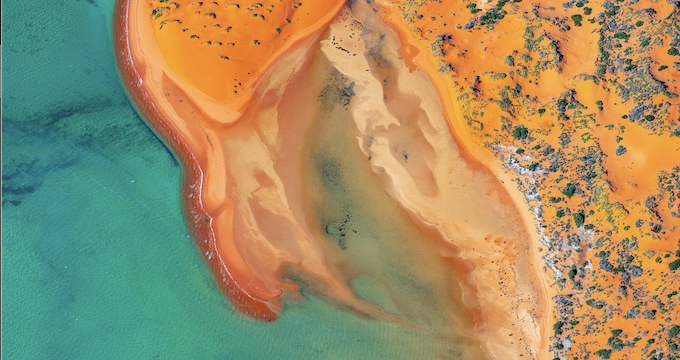As an experienced early childhood educator and skilled migrant to Australia, I view education as a vehicle for transformation. Moving from Pakistan’s structured education system to Australia’s diverse landscape has deepened my understanding of how culture shapes learning. A key turning point in my journey has been integrating Aboriginal and Torres Strait Islander perspectives into early childhood education, an experience that has reshaped both my practice and worldview.
Australia’s education sector increasingly recognises the value of embedding Indigenous perspectives. But the question remains: Are we doing this authentically or merely ticking boxes?
This blog reflects on my evolving understanding and the steps we must take to ensure Indigenous perspectives are genuinely honoured in early childhood settings.
Beginning with the Self: A Reflexive Lens
Change begins with self-awareness. My work as a public servant in Pakistan provided a strong foundation in education systems. But it wasn’t until I entered Australia’s early learning sector that I began to question whose knowledge is valued and whose stories are told.
These reflections pushed me to ask:
- Whose stories are we sharing with children?
- What knowledge systems are we privileging?
- How do our cultural identities influence our teaching?
Without this self-location, our efforts risk being tokenistic.
Moving from Tokenism to Transformation
Too often, Indigenous content is reduced to symbolic gestures, dot paintings, Dreamtime stories during NAIDOC Week, or the Aboriginal flag on display. While well-intentioned, these acts often lack depth and continuity.
Tokenism reduces rich cultures to surface-level content and reinforces stereotypes. A transformative approach involves:
- Understanding Country and Place: Recognising learning as relational and land-connected.
- Respecting Indigenous Ways of Knowing: Including oral histories, community voices, and land-based pedagogies.
- Building Reciprocal Relationships: Working with, not for, Aboriginal communities.
Learning from Indigenous Voices
Engaging with Aboriginal scholarship transformed my thinking. Tyson Yunkaporta’s Sand Talk encouraged me to view knowledge through Indigenous metaphors relational, non-linear, and grounded in Country. Karen Martin’s work on Aboriginal epistemology deepened my understanding of curriculum as relational, place-based, and community-driven.
From Reflection to Action: Embedding Perspectives
Theory only takes us so far. Here’s how I’ve applied this in practice:
1. Place-Based Learning
Each place has an Indigenous history. In my role supporting early learning services, we began acknowledging Country as part of our daily rhythm outdoors, during sensory play, and in conversations about the land, weather, and animals.
2. Community Relationships
We sought genuine partnerships with local Elders and cultural educators. Their stories brought depth and context to the curriculum. One Elder shared a local Dreaming story and helped children create clay animals, an experience that brought cultural learning to life in a respectful, memorable way.
3. Purposeful Curriculum Planning
We moved away from “special topic weeks” and began weaving Indigenous perspectives into everyday learning.
Examples include:
- Including Aboriginal seasonal knowledge in science units on life cycles.
- Introducing traditional rhythms and dances in music with community guidance.
- Using First Nations-authored picture books in literacy to reflect diverse voices.
This aligns with the idea of “pedagogies of possibility,” where the curriculum becomes a site of reflection and ethical practice.
Embracing Discomfort
This journey hasn’t been easy. At times, I’ve felt uncertain and fearful of making mistakes. But I’ve come to see discomfort as part of growth.
Challenges include:
- Fear of getting it wrong: A common concern. But respectful engagement, consultation, and reflection help us move forward.
- Lack of knowledge or confidence: Ongoing professional learning is essential. Workshops, Indigenous literature, and connecting with local organisations are great starting points.
- Systemic barriers: Time and funding can limit engagement. Leadership support is key to embedding this work meaningfully.
Looking Ahead: What Must Change
For lasting impact, we must focus on:
1. Initial Teacher Education
Universities should embed Indigenous content across disciplines, not isolate it to a single unit.
2. Culturally Safe Workplaces
We need environments where educators feel safe to explore identity and culture. This includes:
- Anti-bias training
- Cultural protocols
- Leadership that models inclusive practice
3. Community-Led Professional Development
PD must be guided by Aboriginal voices, Elders, cultural educators, and Aboriginal-owned consultancies. This shifts power and builds relevance.
Final Reflections: A Lifelong Journey
Embedding Indigenous perspectives isn’t a checklist, it’s a lifelong commitment. It requires us to question dominant narratives and honour multiple ways of knowing.
As someone living on unceded lands, I feel responsible to uphold First Nations voices. As an educator, I have the privilege of shaping young minds and the responsibility to do so ethically and inclusively.
Let’s build classrooms not just inclusive of Indigenous perspectives, but built upon them where learning is land-connected, community-guided, and grounded in respect.
“When we embed Indigenous ways of knowing, being, and doing in our practice, we are not just teaching children we are reshaping the future.”

Arzoo Kanwal is enrolled in a research graduate certificate at the University of the Sunshine Coast. She is an experienced early childhood education leader and researcher who is passionate about embedding Indigenous perspectives, cultural inclusion, and teacher development.




